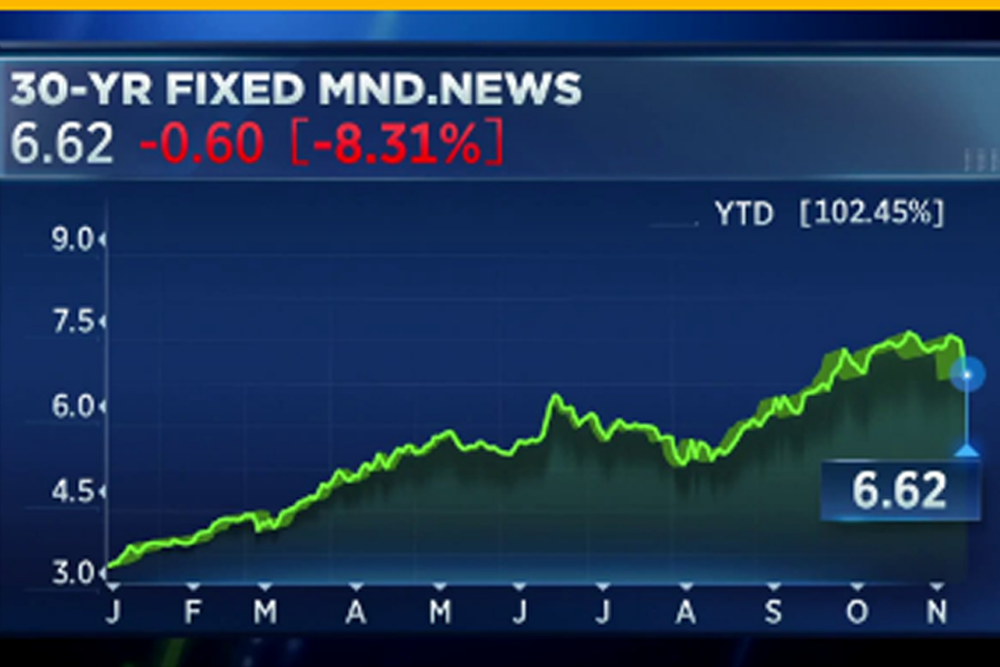Mortgage rates fell sharply Thursday after a government report showed that inflation had cooled in October, prompting a decline in bond yields.
The average rate on the 30-year fixed plunged 60 basis points from 7.22% to 6.62%, according to Mortgage News Daily. That matches the record drop at the start of the Covid 19 pandemic. The rate, however, is still more than double what it was at the start of this year.
KEY POINTS
- Mortgage rates fell sharply Thursday after a government report showed that inflation had cooled in October.
- The average rate on the 30-year fixed plunged 60 basis points from 7.22% to 6.62%, according to Mortgage News Daily.
- The rate, however, is still more than double what it was at the start of this year.
Mortgage rates fell sharply Thursday after a government report showed that inflation had cooled in October, prompting a decline in bond yields.
The average rate on the 30-year fixed plunged 60 basis points from 7.22% to 6.62%, according to Mortgage News Daily. That matches the record drop at the start of the Covid 19 pandemic. The rate, however, is still more than double what it was at the start of this year.
In turn, stocks of homebuilders such as Lennar, DR Horton and Pulte jumped, along with broader market gains. Those stocks have been hammered by the sharp increase in rates over the past six months.
The Consumer Price Index rose in October at a slower pace than expected. As a result, bond yields dropped sharply, and mortgage rates followed, as they follow loosely the yield on the 10-year Treasury.
So what happens next?
“This is the best argument to date that rates are done rising, but confirmation requires next month’s CPI to tell the same story,” said Matthew Graham, chief operating officer of Mortgage News Daily. “This was always about needing two consecutive reports of this nature combined with acknowledgement from the Fed that the inflation narrative is shifting.”
But Graham said rates are not out of the woods yet. They are also unlikely to move dramatically lower, as there is still plenty of economic uncertainty both in U.S. and global financial markets.




